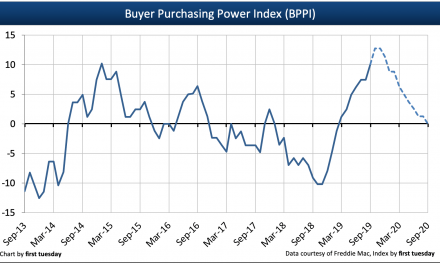National mortgage volume turned in a mixed performance in 2018, with mortgages for commercial and multi-family properties rising and residential mortgages declining.
The fourth quarter (Q4) of 2018 saw a significant year-over-year increase across most commercial property types, for an overall 14% increase in originations. This rise included increases of:
- 61% for healthcare;
- 32% for multi-family; and
- 28% for industrial, according to MBA.
Retail remained mostly flat, while hotel and office originations declined slightly.
In 2018, the top lenders for commercial and multi-family mortgages were:
- Wells Fargo;
- Key Bank;
- JP Morgan Chase & Company;
- Bank of American Merrill Lynch; and
- Capital One Financial Corp, according to MBA.
On the other hand, residential mortgage originations declined 7% in 2018 compared to the prior year. Home purchase applications actually increased slightly, while the number of refinances declined significantly as rising interest rates made refinancing less attractive.
The situation is even less optimistic for home purchase applications and originations here in California, due to the reduced home sales volume seen in the second half of 2018, continuing in 2019.
Related article:
Originations in 2019-2020
Residential mortgage originations are struggling in 2019, with weekly reports continuing to show fewer mortgage applications, a predictive trend for future originations. Despite mortgage interest rates falling back in the first half of 2019, mortgage purchase applications are still roughly level with a year ago when rates were still rising. Refinances have continued to decline, according to the latest MBA weekly applications survey.
MBA’s forecast for residential mortgages is a slight decline for both purchases and refinances in 2019, followed by a gradual rise in 2020-2021. While 2019 totals are expected to decrease, MBA expects reports to still show the regular annual bump experienced during the spring homebuyer season.
MBA forecasts commercial and multi-family originations to remain unchanged in 2019 compared to 2018. While acknowledging property values are leveling off, MBA points to demand for regular annual property income as a sustaining factor.
As California property prices continue to react to the higher interest rates experienced in 2018, investors are shifting their focus away from short-term profits gained on resale to the long-term yield produced by a property’s annual operations. This means investors are becoming more focused on suitable capitalization (cap) rates.
Mortgage loan originators (MLOs) and real estate agents are watching these numbers closely, as the housing and commercial real estate markets head into the next recession, anticipated to arrive in 2020.
Related article:














